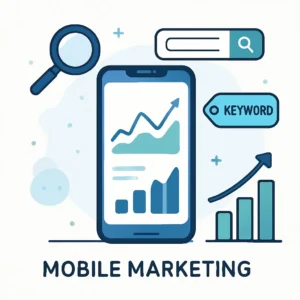

Content Creation – Engage your Audience and Drive Growth
content creation is more than just publishing articles or posting on social media. It’s about creating purposeful, high-quality, and relevant content that connects with your audience, supports your brand’s goals, and ultimately drives growth. Whether you’re a business owner, a digital marketer, or a content creator, understanding how to develop an effective content creation strategy is essential to building a successful online presence. This guide covers the fundamentals of content creation and how to optimize your strategy to engage your audience, boost brand visibility, and generate leads.
Table of Contents
Toggle1. Understanding Content Creation
Content creation is the process of planning, producing, and sharing content that serves a specific purpose and resonates with a target audience. Content can take many forms, such as:
- Blog Posts: Written content that informs, educates, or entertains.
- Videos: Visual content that engages users and demonstrates products, tells stories, or provides tutorials.
- Social Media Posts: Shorter-form content designed for platforms like Instagram, Facebook, LinkedIn, and Twitter.
- Infographics: Visually appealing graphics that convey data or explain complex ideas.
- eBooks and Whitepapers: Long-form content that delves deep into a topic, often gated to generate leads.
- Podcasts: Audio content that shares insights or interviews with industry experts.
Regardless of the format, every piece of content should align with your brand’s goals and serve your audience’s needs. Effective content creation combines creativity, strategic thinking, and data analysis to produce high-quality content that achieves desired outcomes.
2. Setting Content Goals
Before creating any content, it’s crucial to identify what you hope to achieve. Common content goals include:
- Building Brand Awareness: Establishing your brand’s voice and increasing visibility.
- Generating Leads: Providing valuable content that encourages people to engage with your brand and move further down the marketing funnel.
- Educating Your Audience: Sharing knowledge that positions your brand as a trusted source of information.
- Encouraging Engagement: Sparking conversations, comments, shares, and interactions.
- Driving Conversions: Pushing users toward taking a specific action, like signing up for a newsletter or making a purchase.
These goals will shape your content creation approach, helping you decide on topics, tone, and format. For example, a goal to increase engagement might involve creating interactive quizzes or polls on social media, while an aim to drive conversions might focus on in-depth product comparisons or testimonials.
3. Identifying Your Target Audience
Creating content without a clear understanding of your target audience is like throwing darts blindfolded. To connect with your audience effectively, consider factors such as:
- Demographics: Age, gender, education level, income, etc.
- Interests and Pain Points: What topics are they interested in? What challenges do they face?
- Preferred Content Types: Do they prefer watching videos, reading blogs, or listening to podcasts?
- Platforms: Which social media or content-sharing platforms do they use most?
Conducting audience research, creating buyer personas, and analyzing past content performance can give you valuable insights. Use tools like Google Analytics, Facebook Audience Insights, and surveys to gather data on your audience’s preferences and behaviors.
4. Keyword Research and SEO
Content creation isn’t effective if your audience can’t find it. Search Engine Optimization (SEO) is vital for ensuring your content appears in search engine results when users look for relevant information. Keyword research involves identifying the words and phrases your target audience uses when searching for content related to your brand.
Here are some tips for effective keyword research:
- Use SEO Tools: Platforms like Ahrefs, SEMrush, and Google Keyword Planner can help you find popular keywords within your niche, along with data on search volume and keyword difficulty.
- Target Long-Tail Keywords: Longer, specific keywords (like “content strategy for small businesses”) often have lower competition and higher conversion rates than shorter, broad keywords.
- Focus on Search Intent: Identify whether your audience is looking for information, seeking a specific product, or ready to make a purchase. Tailor your keywords accordingly (e.g., “content ideas for social media” vs. “buy content creation tools”).
5. Planning and Structuring Content
A content calendar is a tool that organizes your content creation process, helping you maintain a consistent publishing schedule. Here’s how to plan content effectively:
- Content Types: Decide on the mix of content formats that suit your audience and goals. You might include a mix of blogs, videos, and social posts.
- Frequency: Determine how often you’ll publish content. Consistency is more important than frequency; choose a schedule you can realistically maintain.
- Themes: Focus on broad themes or topics that align with your brand’s goals. For example, a content calendar might include monthly themes like “Content Creation Tips,” “SEO Basics,” or “Social Media Trends.”
- Collaborations and User-Generated Content: If applicable, incorporate collaborations with influencers or encourage user-generated content, such as customer testimonials or social media shoutouts.
6. Content Creation Tools
Creating high-quality content often requires a mix of tools to aid in brainstorming, writing, designing, and sharing content. Some popular tools include:
- Content Research Tools: BuzzSumo and AnswerThePublic provide insights into trending topics and commonly asked questions in your niche.
- Graphic Design Tools: Canva and Adobe Spark make it easy to create visually appealing graphics for social media and blog posts.
- Video Editing Tools: Platforms like Adobe Premiere Pro and InShot can help you create and edit engaging video content.
- Writing and Editing Tools: Grammarly and Hemingway are essential for producing error-free, readable text.
- Content Management Systems (CMS): Platforms like WordPress, Wix, and Squarespace are crucial for managing and publishing your content effectively.
7. Creating Engaging Content
Successful content doesn’t just inform; it also engages. Here are a few tips to make your content more engaging:
- Use Visuals: Visual elements like images, videos, and infographics can enhance your content’s appeal and make it easier for users to absorb.
- Write Clear Headlines: A compelling headline is key to getting people to click on your content. Use action words, numbers, and address a specific audience need or benefit.
- Tell Stories: People connect with stories. Use anecdotes, case studies, or customer testimonials to make your content relatable and memorable.
- Incorporate CTAs (Call-to-Actions): Guide readers toward the next step, whether it’s signing up for a newsletter, downloading an eBook, or following your social media channels.
8. Analyzing and Optimizing Content
Content creation doesn’t end after publishing. Regularly analyzing content performance is crucial for refining your strategy. Metrics to track include:
- Engagement Rate: Likes, comments, shares, and interactions on social media.
- Traffic Sources: Where your audience is coming from (organic, social media, referrals).
- Conversion Rate: How often your content leads to actions like sign-ups or purchases.
- Bounce Rate: The percentage of visitors who leave after viewing one page (a high bounce rate may indicate irrelevant content).
By reviewing these metrics, you can identify which types of content resonate with your audience and which need improvement. Use insights from these analyses to optimize future content, adjusting topics, formats, and posting schedules based on what performs best.
Conclusion
Content creation is both an art and a science. By setting clear goals, understanding your audience, conducting thorough research, and using the right tools, you can develop a content strategy that engages, informs, and drives results. Remember that content creation is a long-term process—consistent, valuable content builds trust, fosters relationships, and ultimately strengthens your brand’s position in the digital landscape. Start building your content strategy today, and watch your efforts pay off in increased brand awareness, engagement, and conversions.






















Post Comment